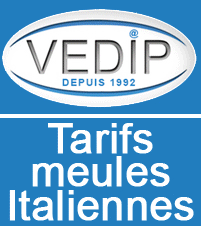Structural glass engineering
Architects of prestigious buildings – whether in culture, politics or business – have always used glass as a design element. Yet today’s functional buildings tend to have shapes that go much further than pure expediency, and glass is therefore used more and more frequently as a structural support element. Historic, 19th-century examples include the greenhouses at Kew Gardens in London and at Laeken in Brussels: glass engineering of the highest standard and indeed over 130 years old. At the time flat glass was still rather a costly building material. The open greenhouses gave people an idea of state-of-the-art 19th-century engineering and of the owners’ wealth.
But the examples also show that glass helps to integrate a building skilfully into the surrounding landscape without disturbing its visual impact. Glass enlarges premises and provides a connection between the inside and the outside.
Glass has symbolic power
Inspired by this type of glass architecture, the renowned architect Frank Gehry recently designed an exhibition building for the Fondation Louis Vuitton in Paris which was opened in 2014 and shows how contemporary glass engineering can be realised at the highest level. Set within plenty of green space on the edge of the Bois de Boulogne, the twelve-part roof structure reminds us of two overlapping sails. Being a self-confessed sailing enthusiast, Gehry wanted to create the impression of a sailing boat moving ahead at full speed.
The total area occupied by glass – 13,300 square metres in all – consists of 3,600 panes, none of which are identical. The angle of the bend is different for each pane, ranging from flat to a 3-metre radius.
Moreover, the building material had to meet all the relevant safety engineering requirements, stipulated under French law. Gehry therefore decided to use laminated safety glass (LSG) in combination with a strong, highly rigid interlayer, 1.52 mm thick and made of SentryGlas® ionoplast from Kuraray Europe GmbH. The actual glass is prestressed, with panes that are six and eight millimetres in thickness. To meet the high standards of structural engineering, the LSG had to be freely shaped, using modified bending furnaces.
The 6-mm inner pane was given a reflective coat, with white ceramic screenprinting and 50% opacity – an important feature to protect the valuable exhibits from direct sunlight. Moreover, it creates a pleasant, non-glare lighting effect.
To ensure an undisturbed overall visual impact of the individual sails, the design engineers and the architect opted for an adhesive bond between the LSG and the frame and also as a filler for the wide expansion joints. They decided to use sealants from Dow Corning…
Rain of towers in La Défense
In addition to the tower Saint Gobain whose construction has just begun other towers are under construction (about twenty projects).
We can mention the Alto tower, the Sisters, the tower Air2, the gardens of the arache. Renovation of the Pascal towers. The Hermitage towers are on their side in need of funding.
Inauguration of the new Aniche float. la France
After 30 Million Euros of investment for the renovation and modernization of its Aniche float Patrick Dupin, President of Saint-Gobain's Flat Glass sector inaugurated the new Aniche oven on May 25th.
The float is planned for an annual production of 20 million square meters for the building and automotive markets.
After 4 difficult years following the collapse of the automotive glass and glass markets for the building during which Saint Gobain took exceptional measures to preserve the workstations, the commissioning of this new float, the estimated life of which At 20 years confirms the industrial implication of St Gobain in this region which remains one of its cradles.
Saint Gobain's know-how has helped to increase the productivity of this facility by 10%, reduce energy consumption by 25% and CO2 emissions by 20%.
The diploma Verrier Creator recognized at the Bac + 2 level, in France
The training program for the arts and techniques of glass is structured by the recognition of the diploma Createur Verrier (formerly European glassmaker). It is now possible to pass a CAP Verre and then the diploma Createur Verrier recognized at the level Bac + 2.
It should be remembered that for almost twenty years, almost all glassmakers installed in France have attended this training at Cerfav; Many of these art craftspeople have followed a training course in apprenticeship, at an artisan and at Cerfav, before attending the Createur Verrier
Page 45 of 75








